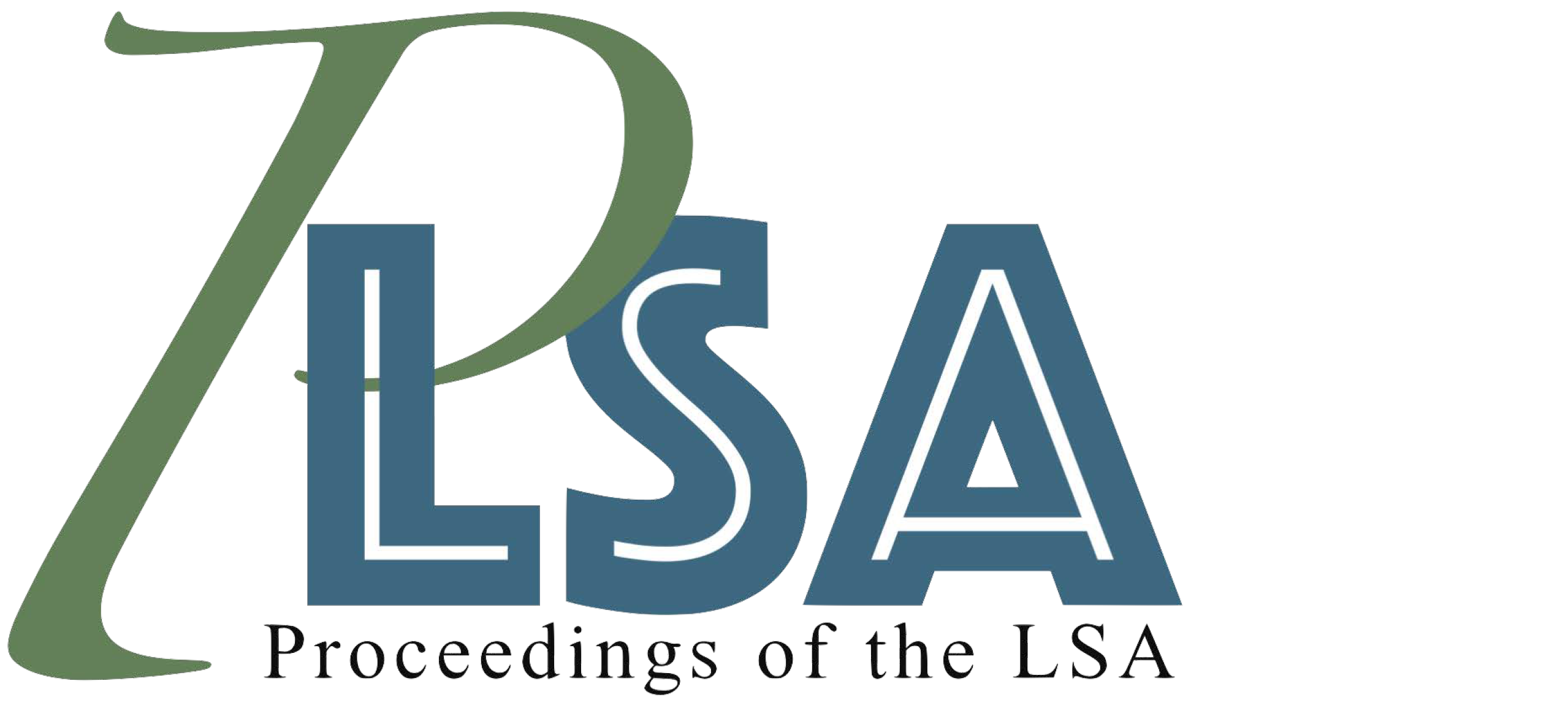Scalar properties of Japanese and English sense-based minimizers
DOI:
https://doi.org/10.3765/plsa.v6i1.4979Keywords:
sense-based minimizer, scalarity, conventional implicature, experience, cross-linguistic/language internal variationAbstract
The Japanese minimizers kasukani ‘faintly’ and honokani ‘approx. faintly’ and the English minimizer faintly are similar to typical minimizers, such as the Japanese sukoshi ‘a bit’ and English a bit, in that they semantically represent a low degree. However, their meanings and distribution patterns are not the same. I argue that kasukani, honokani, and faintly are sense-based minimizers in that they not only semantically denote a small degree but also convey that the
judge (typically the speaker) measures degree based on his/her own sense ( the senses of sight, smell, taste, etc.) at the level of conventional implicature (CI) (e.g., Grice 1975; Potts 2005; McCready 2010; Gutzmann 2011). It will be shown that this characteristic restricts sense-based minimizers to occur only in a limited environment. This paper also shows that there are variations among the sense-based minimizers with regard to (i) the kind of sense, (ii) the presence/absence of evaluativity, and (iii) the possibility of a combination with an emotive predicate, and will explain them in the non-at-issue domain. In analyzing the meaning of sense-based minimizers, the relationship between a sense-based minimizer and a predicate of personal taste (e.g., Pearson 2013; Ninan 2014; Kennedy & Willer 2019; Willer & Kennedy 2019) will also be discussed.
Downloads
Published
Issue
Section
License
Published by the LSA with permission of the author(s) under a CC BY 4.0 license.
